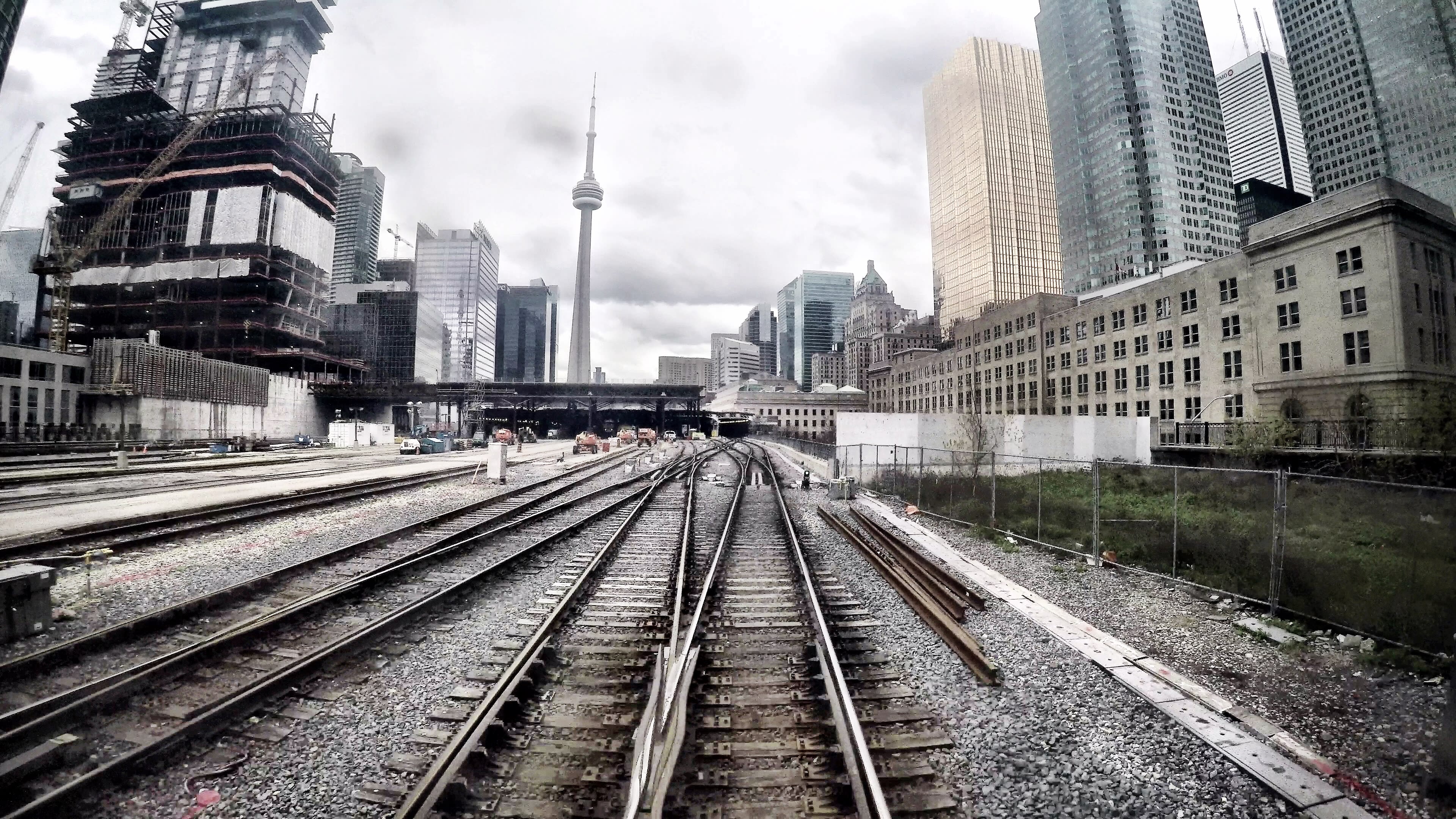How transit construction sounds are being toned down a notch
Metrolinx is taking steps to reduce our hardworking cacophony – including softening familiar noises.
Oct 3, 2019
We get an earful about sometimes being noisy neighbours.
The commotion of our motion.
The clamour of our construction.
The racket Metrolinx is responsible for.
When you run a large transit system, as well being responsible for planning and building major new routes and lines across Canada’s most densely populated region, you tend to turn up the volume. And while it may be excusable and understandable, we know how ear-plugging annoying it can be for customers and communities.
So as much as Metrolinx likes to create a buzz over exciting additions to GO Transit service, finding ways to lower noise levels is important.
It’s also created some unusual solutions.
Hearing the sound of a construction vehicle backing up – the sharp ‘beep-beep’ safety alert – is as familiar in Ontario cities as car horns and jets overhead. Depending on location, the alarms can often be heard as far away as three kilometres. So the noise can be particularly bothersome to residents living near Metrolinx sites that use big machines.
To help, ‘white noise’ versions are replacing the traditional alarms on most of our regular rail corridor work vehicles. The new, less intrusive version is still safe, but far less shrill.
As if you need a reminder – here is a traditional backup alarm:
https://metrolinx.wpcomstaging.com/wp-content/uploads/2019/10/nowclickhereforamodifiedwarninga.mp3
And now, a ‘white noise’ version that’s a bit less, well, alarming:
https://metrolinx.wpcomstaging.com/wp-content/uploads/2019/10/nowclickhereforamodifiedwarninga.mp3
Sometimes, being a bit quieter means just changing habits rather than sounds. Metrolinx is adopting a one-way directional truck route through construction sites wherever feasible, thereby removing the need for backup devices. Delivery trucks enter through one gate entrance, load or offload their goods, and leave through another gate without shifting into reverse.
The clatter of a train moving on the tracks is so iconic, it’s part of the patter of nursery-rhymes and woven into the music of a great many songs. But it can also be irksome for those who live near rail lines that GO trains run on.
By replacing shorter pieces of rail with continuously welded rail, maintenance teams can ensure the track rail is more seamless, reducing the conventional clickety-clack noise and vibrations equated with older eras.
Noise and vibration absorbing pads, or ballast mats, which are placed under rail ties lessen the bed-shaking experiences that are caused by our activity.
In similar fashion, signal communications upgrades continue and manually operated signal switches of yesteryear will all soon be replaced with automatic signalling, improving traffic flow, and reducing the need to pause noisy locomotives outside your bedroom window on their approach to Union Station.
Some trains which need longer periods of idling are being moved further away from populated areas, too.
“At Metrolinx, we are listening to and working with those who live in the communities in which we operate, conduct regular maintenance, and are growing our rail network,” says Bill Clowes, Metrolinx vice president of the Union Station Rail Corridor. “Often much of the work we do needs to be scheduled for after hours, particularly overnight, after service hours, when it is safest for our riders, workers and local residents.
“We are very aware of how our rail corridor work impacts the community, primarily with noise, and we are responding in ways to reduce our disruption wherever and whenever practical.”
We can’t be totally quiet – not as our vehicles make millions of passenger trips each year – but we’ll definitely GO the extra mile.
Even GO train announcements can be annoying when you’re relaxing, eyes closed, on a trip – though they are needed to make sure everyone boarding has the same safety information and you get important service updates for future journeys.
But we know as friendly neighbours, we can be a bit raucous.
So if not down to a whisper, we’re at least looking to find ways that it’s not as much of an almighty roar.
Those Nagging Noises
If you’ve had it up to your ears in modern noise levels in and around Ontario cities, you’re not alone. Neighbourhoods are loud places and spaces, with even the background chorus inside restaurants elevating over recent years – thanks largely to open-concept design and a change in sound-absorbing materials used.
Here’s a quick guide to how certain modern levels compare.
- A whisper is about 30 dBA (a decibel scale reading).
- Light traffic rates about a 50 on that scale.
- Your toilet flushing is around 75 and alarm clock is 80 dBA.
- A bulldozer can create noise levels of 100.2 to 112.5 dBA
- A jackhammer is about as noisy as a loud rock band – about 110 dBA.
- A train horn can be 175 decibels – a needed warning given the time they need to stop.
by James Burchell community relations and issues specialist
